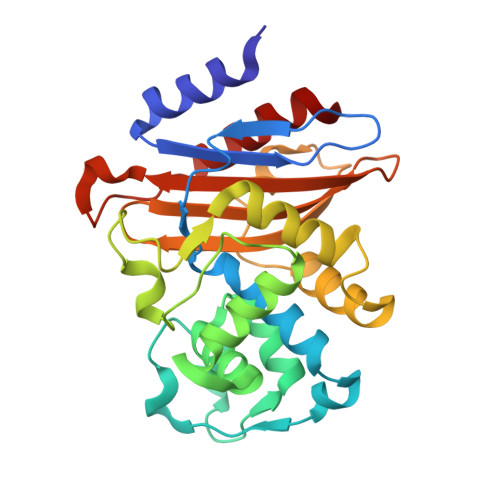Asp179 in the class A beta-lactamase from Mycobacterium tuberculosis is a conserved yet not essential residue due to epistasis.
van Alen, I., Chikunova, A., van Zanten, D.B., de Block, A.A., Timmer, M., Brunle, S., Ubbink, M.(2023) FEBS J 290: 4933-4949
- PubMed: 37335937
- DOI: https://doi.org/10.1111/febs.16892
- Primary Citation of Related Structures:
8BTU, 8BTV, 8BTW, 8BV4 - PubMed Abstract:
Conserved residues are often considered essential for function, and substitutions in such residues are expected to have a negative influence on the properties of a protein. However, mutations in a few highly conserved residues of the ¦Â-lactamase from Mycobacterium tuberculosis, BlaC, were shown to have no or only limited negative effect on the enzyme. One such mutant, D179N, even conveyed increased ceftazidime resistance upon bacterial cells, while displaying good activity against penicillins. The crystal structures of BlaC D179N in resting state and in complex with sulbactam reveal subtle structural changes in the ¦¸-loop as compared to the structure of wild-type BlaC. Introducing this mutation in four other ¦Â-lactamases, CTX-M-14, KPC-2, NMC-A and TEM-1, resulted in decreased antibiotic resistance for penicillins and meropenem. The results demonstrate that the Asp in position 179 is generally essential for class A ¦Â-lactamases but not for BlaC, which can be explained by the importance of the interaction with the side chain of Arg164 that is absent in BlaC. It is concluded that Asp179 though conserved is not essential in BlaC, as a consequence of epistasis.
Organizational Affiliation:
Leiden Institute of Chemistry, Leiden University, Leiden, The Netherlands.
















